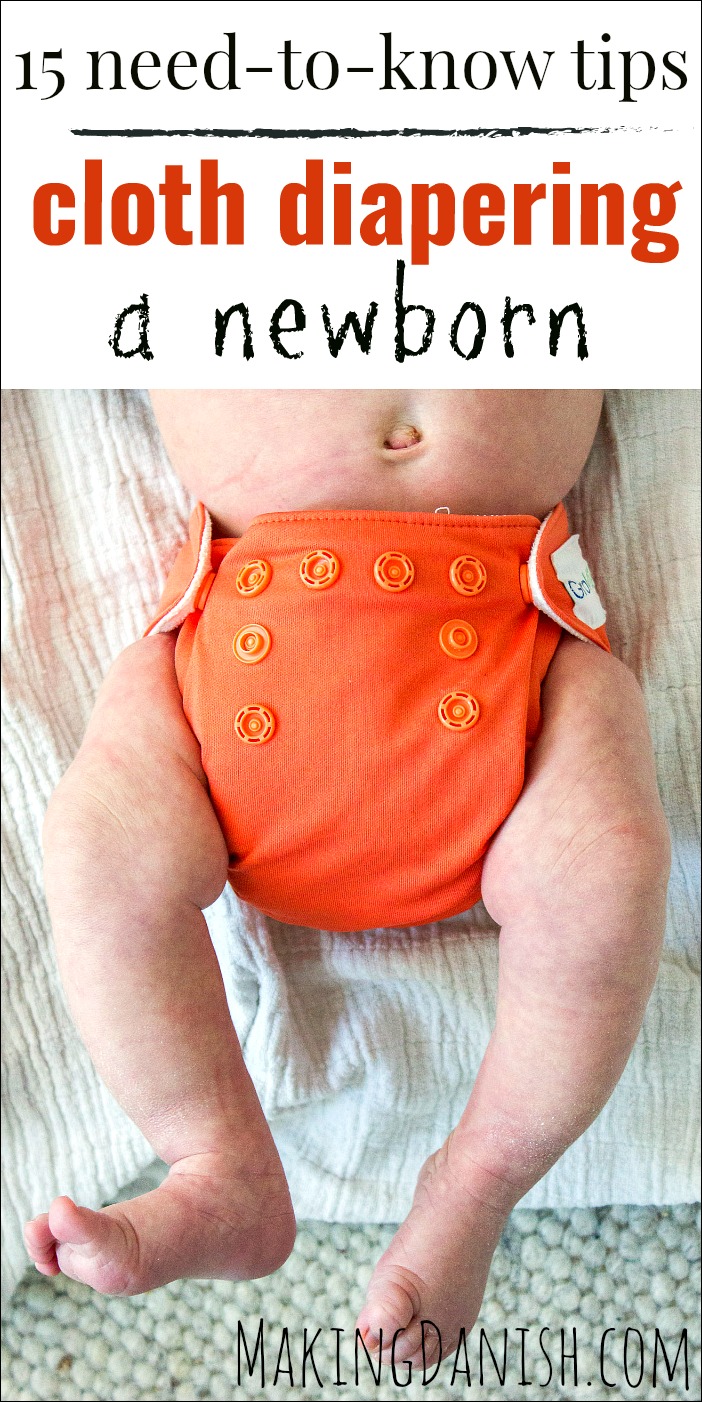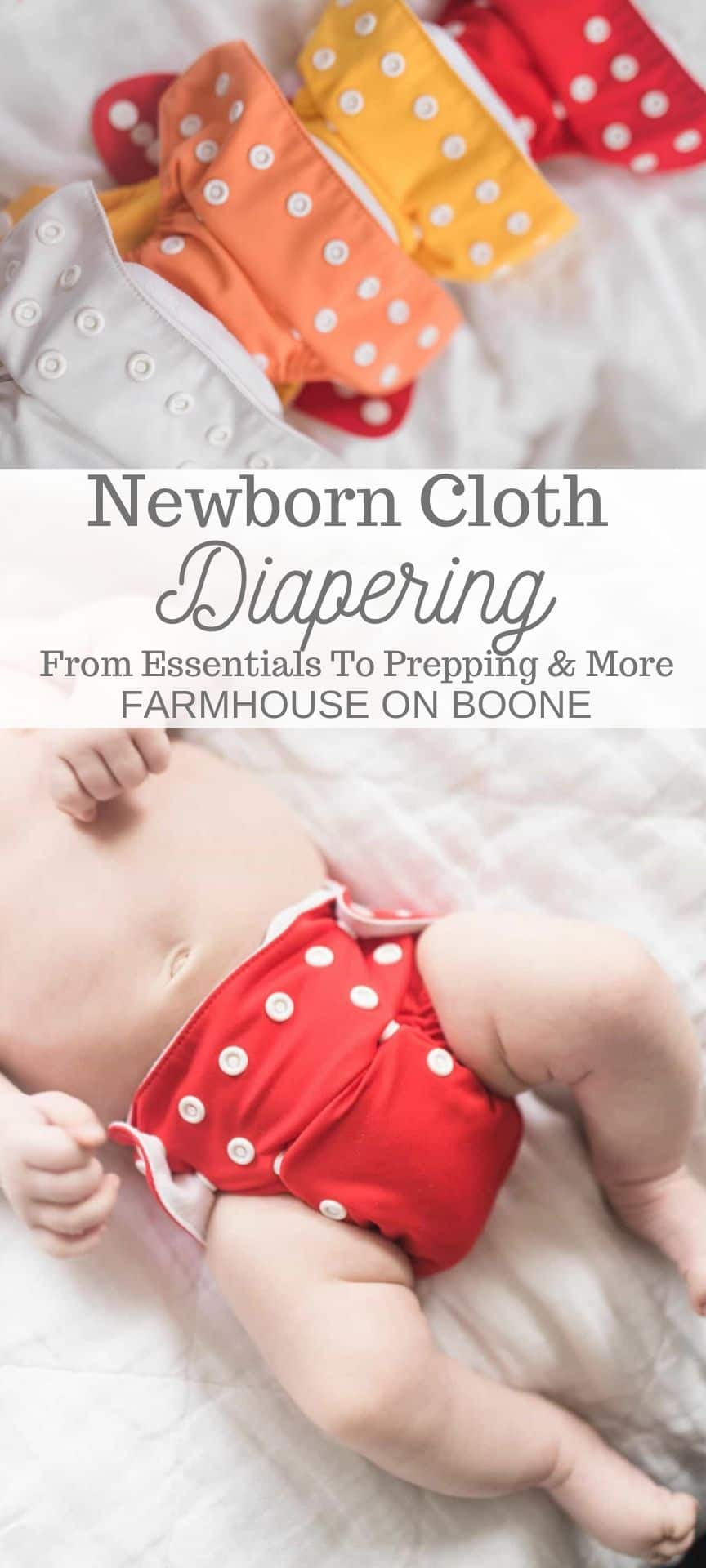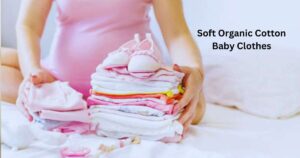To cloth diaper a newborn, place the diaper flat, lay your baby on it, and secure it snugly around their waist. Ensure the diaper fits well to prevent leaks.
Cloth diapering a newborn can seem daunting, but it’s a rewarding and eco-friendly choice. Unlike disposable diapers, cloth diapers are reusable, reducing waste and saving money over time. They come in various types, such as prefolds, fitteds, and all-in-ones, each designed to provide comfort and protection.
Properly using and maintaining cloth diapers ensures your baby stays dry and comfortable. Always choose soft, absorbent fabrics to keep your newborn’s sensitive skin rash-free. Regularly check and change the diaper to maintain hygiene. With a little practice, cloth diapering becomes an easy and sustainable routine for new parents.

Credit: makingdanish.com
Introduction To Cloth Diapering
Welcome to the world of cloth diapering! Many parents are choosing cloth diapers for their newborns. They offer many benefits and are easy to use.
Why Choose Cloth Diapers?
Cloth diapers are great for babies’ skin. They are free from harsh chemicals. This makes them gentle and safe for sensitive skin.
Parents can find cloth diapers in many styles and colors. Some come with cute prints and patterns. This makes diapering fun and stylish.
Environmental And Financial Benefits
Cloth diapers are eco-friendly. They help reduce waste. Disposable diapers take hundreds of years to decompose.
Using cloth diapers can save money. Here is a simple comparison:
| Item | Cloth Diapers | Disposable Diapers |
|---|---|---|
| Initial Cost | $300-$500 | $2000-$3000 |
| Monthly Cost | $0 (after initial purchase) | $70-$100 |
Cloth diapers are reusable. You can use them for future siblings. This adds to the savings.
Here are some quick benefits of cloth diapers:
- Less waste in landfills.
- Lower long-term costs.
- Better for baby’s skin.
Making the switch to cloth diapers can be rewarding. It is good for the planet and your wallet.
Types Of Cloth Diapers
Choosing the right cloth diaper for a newborn can be overwhelming. There are various types of cloth diapers, each with unique features. Understanding these types will help you make an informed decision.
Prefolds And Flats
Prefolds and flats are the most basic types of cloth diapers. Prefolds are rectangular pieces of fabric with multiple layers. Flats are large, single layers of cloth that you fold to fit your baby.
- Prefolds are easy to use and very absorbent.
- Flats dry quickly and are versatile.
Both types need a waterproof cover to prevent leaks. Prefolds and flats are cost-effective and customizable.
Fitteds, Pockets, And All-in-ones
Fitted diapers are shaped like a disposable diaper. They have elastic around the legs and waist for a snug fit. These diapers are highly absorbent but require a waterproof cover.
Pocket diapers have a pocket opening where you can insert absorbent pads. The outer layer is waterproof, so no additional cover is needed. Pocket diapers are adjustable and dry quickly.
All-in-One (AIO) diapers are the most convenient. They have an absorbent layer sewn into the waterproof cover. AIO diapers are easy to use and perfect for busy parents or caregivers.
| Type | Features | Pros | Cons |
|---|---|---|---|
| Prefolds | Rectangular, multiple layers | Cost-effective, absorbent | Need a cover, can be bulky |
| Flats | Single layer, large piece | Versatile, quick-drying | Requires folding, need a cover |
| Fitteds | Shaped like a disposable | Snug fit, very absorbent | Need a cover, longer drying time |
| Pockets | Insertable pads | Adjustable, quick-drying | Requires stuffing, can be bulky |
| All-in-Ones | Absorbent layer sewn in | Convenient, easy to use | Longer drying time, can be expensive |
Each type of cloth diaper has its own benefits. Consider your lifestyle and needs to choose the best option for your baby.
Essential Cloth Diaper Supplies
Starting a journey with cloth diapers requires the right supplies. Newborns need specific items to ensure a smooth cloth diapering experience. Here are the essential cloth diaper supplies that every parent should have.
Diaper Covers And Inserts
Diaper covers and inserts are the main components of cloth diapering. These items keep your baby dry and comfortable.
- Diaper Covers: These waterproof layers prevent leaks. They come in various sizes and materials.
- Inserts: These absorbent layers fit inside the diaper covers. They are made from materials like cotton, bamboo, or microfiber.
Consider having at least 6-8 diaper covers and 12-18 inserts for newborns. This number ensures you always have a clean diaper on hand.
Wet Bags And Pail Liners
Wet bags and pail liners help manage dirty diapers. They are crucial for cleanliness and odor control.
- Wet Bags: These are small, waterproof bags. They store dirty diapers when you are out and about. Wet bags can hold several diapers and keep smells contained.
- Pail Liners: These are larger bags that fit inside diaper pails. They hold a day’s worth of dirty diapers at home. Pail liners are washable and reusable.
Having 2-3 wet bags and 2 pail liners can make diapering easier. You can rotate them while washing and drying.
How To Prep Cloth Diapers
Cloth diapers are an eco-friendly and cost-effective choice for your baby. Before using them, you need to prepare the diapers properly. Proper prep ensures they are clean and absorbent. Follow these steps to get your cloth diapers ready for your newborn.
Pre-washing New Diapers
New cloth diapers need pre-washing to remove any manufacturing residues. This step is crucial for absorbency and hygiene. Here’s a simple guide to pre-wash your diapers:
- Check the manufacturer’s washing instructions.
- Wash new diapers separately from other laundry.
- Use a mild detergent without additives.
- Select a hot water cycle to clean thoroughly.
- Rinse multiple times to remove soap residue.
It is important to repeat the wash cycle 2-3 times. This helps in achieving maximum absorbency.
Tips For First-time Use
Preparing for the first use of cloth diapers involves a few important steps:
- Check Fit: Ensure the diaper fits snugly around the baby’s legs and waist.
- Use Liners: Consider using liners for easy clean-up.
- Adjust Fasteners: Make sure fasteners are comfortable and secure.
- Monitor Absorbency: Test absorbency to prevent leaks.
Proper preparation and first-time use ensure a comfortable experience for your baby. Happy diapering!
Step-by-step Diapering Process
Cloth diapering a newborn can feel overwhelming at first. Breaking it down into simple steps helps. Follow this guide to master the process quickly.
Folding And Fitting Techniques
Folding the diaper correctly ensures a snug fit. Below are the steps:
- Lay the diaper flat: Place the diaper on a clean, flat surface.
- Fold the front: Fold the front part of the diaper to your baby’s size.
- Bring the diaper up: Position the diaper between the baby’s legs.
- Adjust the folds: Ensure the folds fit comfortably around the thighs.
Proper folding prevents leaks. It also keeps your baby comfortable.
Securing The Diaper
Securing the diaper correctly is crucial. It keeps the diaper in place. Follow these steps:
- Use diaper fasteners: Secure the diaper using fasteners or snaps.
- Check the fit: Ensure the diaper fits snugly but not too tight.
- Adjust the waist: Make sure the waist area is snug and secure.
- Double-check: Inspect the diaper for gaps or loose areas.
A well-secured diaper prevents leaks and ensures comfort for your newborn.

Credit: m.youtube.com
Diaper Changing Routine
Creating a diaper changing routine is vital for parents using cloth diapers. It ensures your baby stays comfortable and healthy. This section will guide you through the key aspects of maintaining a proper diaper changing routine.
How Often To Change
Babies need frequent diaper changes to prevent rashes and discomfort. For newborns, change the diaper every 2-3 hours. Also, always change the diaper after feedings and naps. This routine keeps your baby dry and happy.
| Age | Diaper Changes Per Day |
|---|---|
| Newborn (0-2 months) | 10-12 times |
| 2-6 months | 8-10 times |
| 6-12 months | 6-8 times |
Dealing With Messes
Messy diapers are part of the journey. Here’s how to manage them effectively:
- Prepare your supplies: Keep clean diapers, wipes, and a diaper pail ready.
- Use a liner: Place a liner in the diaper to catch solids.
- Dispose of solids: Shake solids into the toilet before storing the diaper.
- Rinse thoroughly: Rinse the diaper to prevent stains and odors.
- Use a wet bag: Store soiled diapers in a waterproof bag.
Following these steps will keep your diaper changing routine smooth and efficient. It also helps maintain hygiene for both you and your baby.
Washing And Care Tips
Cloth diapering a newborn can be rewarding and economical. Proper washing and care are essential to keep diapers clean and long-lasting. Here are some washing and care tips to help you manage your cloth diapers effortlessly.
Washing Routine
Follow a simple washing routine to ensure your cloth diapers stay fresh and hygienic. Here’s a quick guide:
- Rinse: Start with a cold rinse to remove solids.
- Wash: Use a hot water cycle with a safe detergent.
- Rinse Again: Finish with another rinse to remove soap.
It’s crucial to use a cloth diaper-safe detergent. Regular detergents may cause build-up. Avoid fabric softeners as they can reduce absorbency.
Stain Removal And Maintenance
Stains are common with cloth diapers. Here are some stain removal tips:
- Sun Drying: Hang diapers in the sun to naturally bleach stains.
- Lemon Juice: Apply lemon juice to stains before sun drying.
- Baking Soda: Add baking soda to the wash to lift stains.
Maintaining your cloth diapers is important. Here are some key points:
| Task | Frequency |
|---|---|
| Deep Cleaning | Once a month |
| Elastic Check | Every few weeks |
| Snaps and Velcro | Every wash |
Regular maintenance helps keep your diapers functional and extends their lifespan.
Traveling With Cloth Diapers
Traveling with cloth diapers might seem daunting at first. Proper preparation makes it manageable and eco-friendly. Here are some tips to make your travel experience smooth and stress-free.
Packing Essentials
Start by packing the right essentials. A well-packed diaper bag is crucial. Here’s a list of must-have items:
- Cloth Diapers: Pack enough for the trip duration.
- Wet Bags: Use these to store dirty diapers.
- Wipes: Both cloth and disposable wipes are useful.
- Diaper Liners: These can make cleaning easier.
- Extra Inserts: For added absorbency.
- Diaper Cream: Ensure it’s cloth diaper safe.
- Changing Mat: For hygienic diaper changes.
Remember to pack these items in an organized manner. Keep items accessible for quick changes.
Handling Dirty Diapers On The Go
Managing dirty diapers is simple with the right approach. Follow these tips for ease:
- Use a wet bag to store soiled diapers. Ensure it’s waterproof.
- Rinse off any solids before storing the diaper.
- If you have access to a washing machine, wash them regularly.
- Carry a small spray bottle with a cleaning solution.
Consider using disposable liners for easy removal of solids. This reduces the mess and keeps your wet bag cleaner. Maintain hygiene by washing your hands after each change.
Additional Tips
Here are some extra tips to make your travel easier:
- Plan ahead: Know where you can wash diapers during your trip.
- Stay organized: Keep clean and dirty diapers separate.
- Be flexible: Sometimes, using a few disposables can help.
Remember, every trip gets easier with practice. Soon, traveling with cloth diapers will be second nature.
Common Challenges And Solutions
Cloth diapering a newborn can be rewarding yet challenging. Many parents face common issues that can be easily solved with the right tips and techniques. Here, we discuss some frequent challenges and their practical solutions.
Dealing With Leaks
Leaks are a common issue with cloth diapers. Ensuring a snug fit is crucial. Check if the diaper fits around the legs and waist properly.
- Use the right size: Ensure the diaper size matches your baby’s weight.
- Adjust the snaps: Use the snaps to get a snug fit.
- Check the absorbency: Add extra inserts for more absorbency.
Sometimes, leaks can be due to improper washing. Build-up of detergent can make diapers less absorbent.
- Use the right detergent: Choose a detergent safe for cloth diapers.
- Rinse properly: Ensure all detergent is rinsed out.
Preventing And Treating Diaper Rash
Diaper rash can be uncomfortable for your baby. Prevention and treatment are key.
- Change frequently: Change diapers every 2-3 hours to keep your baby dry.
- Use diaper liners: Liners can help keep moisture away from your baby’s skin.
- Air out: Give your baby’s bottom some air time without a diaper.
If your baby develops a rash, treat it promptly:
- Use diaper cream: Apply a cloth diaper-friendly cream to soothe the skin.
- Avoid irritants: Use mild, fragrance-free detergent and wipes.
Keeping your baby’s skin clean and dry is essential. Follow these steps to prevent and treat diaper rash effectively.

Credit: www.farmhouseonboone.com
Frequently Asked Questions
What Are The Benefits Of Cloth Diapering A Newborn?
Cloth diapering is cost-effective and eco-friendly. It reduces waste and exposure to chemicals. Cloth diapers are reusable and often more comfortable for newborns.
How Many Cloth Diapers Do I Need For A Newborn?
You’ll need about 20-24 cloth diapers. Newborns require frequent changes, typically 10-12 times a day. This ensures you have enough between washes.
How Often Should I Change A Cloth Diaper?
Change a cloth diaper every 2-3 hours. Wetness and soiling can cause irritation. Regular changes keep your baby comfortable and prevent diaper rash.
How Do I Clean Cloth Diapers?
Rinse soiled diapers in cold water. Wash them in a hot water cycle with a gentle detergent. Avoid fabric softeners and bleach.
Conclusion
Cloth diapering a newborn is both eco-friendly and cost-effective. With practice, it becomes second nature. Remember to choose quality materials and maintain a consistent washing routine. Your baby will benefit from the softness and you’ll contribute to a greener planet.
Happy diapering!




